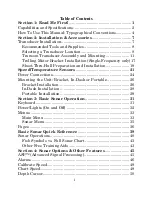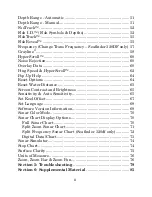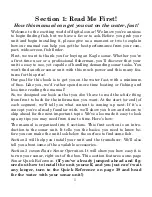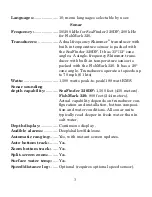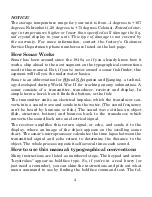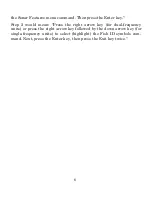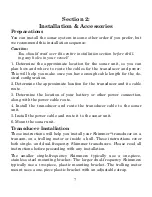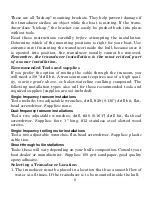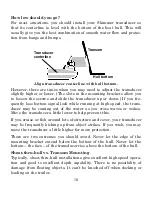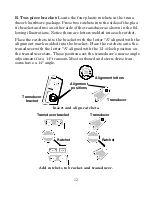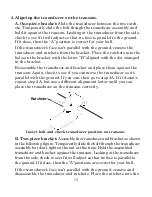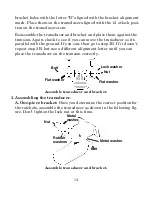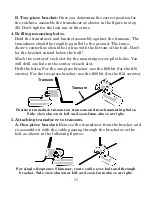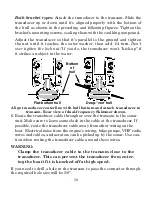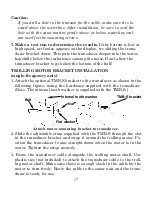
2
After you've gained some experience with your sonar, you'll want to
check out Section 4, which discusses more advanced
Sonar Options and
Other Features
.
When you come to a sonar menu command on the unit's screen, you can
look it up in the manual by skimming over the table of contents, just flip-
ping through Section 3 or scanning through the sonar options in Section 4.
If you're having difficulty with your sonar, you can find an answer to
the most common problems in Section 5,
Sonar Troubleshooting
.
Finally, in Section 6, we offer
Supplemental Material
, including a list of
warranty and customer service information.
Now, if you're into the fine details, glance over the next segment on
specifications to see just how much sonar power your unit contains. It's
important to
us
(and our power users), but, if
you
don't care how many
watts of power the unit has, skip ahead to important information on how
sonar works, on page 4.
Capabilities and Specifications: FishMark
320,
SeaFinder
320DF
General
Display:
............................ 5.0" (12.7 cm) diagonal high contrast Film
SuperTwist; programmable to viewing pref-
erence.
Resolution:
...................... 320 pixel x 320 pixel resolution; 102,400 total
pixels.
Backlighting:
.................. Incandescent backlit screen with multiple
lighting levels; backlit keypad.
Input power:
................... 10 to 15 volts DC.
Case size:
......................... 5.4" H x 6.9" W x 3.4" D (13.8 x 17.6 x 8.6
cm); sealed and waterproof; suitable for
saltwater use.
Back-up memory:
.......... Built-in memory stores sonar records for
decades.



